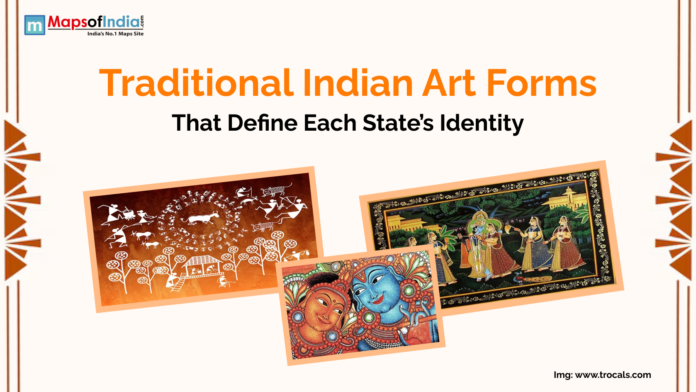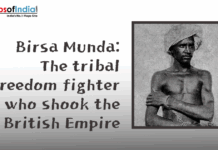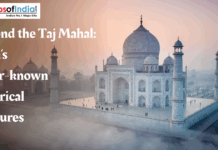Because of its rich cultural variety, India is more often seen as a subcontinent than just a country. This nation, made up of more than two dozen states and union territories, is where you’ll find a large variety of languages, cuisines, festivals and traditional arts. They serve both to look beautiful and to express the events, characteristics, core beliefs and memories of many generations. Every Indian state has an art form that reflects its customs, beliefs and way of living.
We will go on a journey through India’s states to see how their traditional arts highlight their culture.
1. Jammu & Kashmir – Papier-Mâché and Sozni Embroidery
Jammu & Kashmir is famous for its wonderful views as well as for its simple papier-mâché creations. Invented by Persian artists, it features the design of paper pulp objects with lovely floral patterns. At the same time, Sozni embroidery, done with thread on wool and Pashmina shawls, clearly demonstrates the area’s advanced style.
2. Himachal Pradesh – Miniature Paintings and Wood Carving
The paintings from Himachal Pradesh are known for their bright palette and mainly show themes of religion, especially stories from the life of Krishna. Art from these places, made by artists in royal courts of Kangra and Chamba, show the creative heritage of Himachal. Wood carving found on temples and at home is still a central feature of the local art community.
3. Punjab – Phulkari Embroidery
Phulkari or “flower work”, is the main focus of Punjabi textile art. Made with bright silk embroidery on cotton, women have traditionally added this work to shawls, dupattas and household fabrics. Both as artworks and as part of family history, Phulkari patterns include motifs chosen from plants, animals and daily life.
4. Haryana – Saang and Murrah Art
Saang is a special part of Haryanvi culture, using music, dance and drama to tell local stories. The region is famous for its clay craft, mainly the creation of Murrah (stools) with strong, appealing decorations.
5. Uttarakhand – Aipan Art
In Kumaon, women use traditional techniques to decorate surfaces with white rice flour patterns on red clay at various celebrations. They are usually signs for fertility, wealth and protection.
6. Rajasthan – Miniature Paintings and Mandana
Rajasthan art is just as full of color as its surroundings. Many miniature paintings of places like Mewar and Marwar commonly portray stories from Rajput legends, epics and what happened at court. Mandana art, painted with chalk on mud walls and floors, can be found during celebrations and at religious occasions.
7. Uttar Pradesh – Chikankari and Mughal Miniature Painting
Chikankari embroidery from Lucknow shows off elegant and precise designs by combining Persian influences with Indian techniques. Mughal miniature painting which brought together Persian features and Indian scenes, once flourished in Uttar Pradesh since the times of the Mughals.
8. Bihar – Madhubani Painting
A well-known Indian art form around the world, Madhubani is a style of painting from the Mithila region of Bihar. At first, these works were made directly on walls; now, they are drawn on paper and fabric, with geometric designs and mythological, natural and ritual images.
9. Jharkhand – Sohrai and Kohbar Art
In Jharkhand, tribes have protected their art through the special types of wall paintings known as Sohrai and Kohbar. Harvest and cattle worship are represented in Sohrai art which shows animals and nature in earth colors. Typically made in wedding chambers, Kohbar paintings stand for fertility and love.
10. West Bengal – Pattachitra and Kalighat Painting
The folk art traditions of West Bengal are widely known. The name Pattachitra description refers to scroll paintings used to present glorious myths through lively drawings. This style began in late 19th-century Kolkata, intending to criticize social norms and the middle class of the city.
11. Odisha – Pattachitra and Talapatra Etching
Odishan artists create Pattachitra paintings which have borders with many details, stories from mythology and mostly use natural pigments. Talapatra Etching is another unusual form in which stories from sacred books are written on palm leaves by burning patterns into them.
Formalisms and members of the urban middle class.
12. Chhattisgarh – Bastar Metal Craft
Bastar Dhokra metal work plays a major role in Chhattisgarh’s tribal art. Lost-wax casting was used to create the metal sculptures which are influenced by the tribal stories and lives of the area. Many cultural activities in the state rely on bamboo and wood carving.
13. Madhya Pradesh – Gond and Bhil Art
You can find tribal arts all around Madhya Pradesh. Gond paintings, made by members of the Gond people, use bright designs to depict flowers, animals and village living. Bhil paintings are created using natural pigments and dotting and tell stories from their tribes.
14. Gujarat – Rogan Art and Warli Painting
You will find many artistic ways of expression in Gujarat. Rogan Art is the tradition of using materials such as castor oil and herbal dyes to draw on fabric and it’s practiced only in the village of Nirona by one family. Warli painting is linked to Maharashtra mainly, yet Gujarat’s tribal groups also use it to paint scenes from social life and from nature.
15. Maharashtra – Warli Painting
One of India’s best-known tribal art styles, Warli painting, is made by the Warli tribe from Maharashtra. The paintings found here use white paint against a red ochre background to portray daily living, dancing and special occasions. Most of the geometric shapes in this form are circles, triangles and squares.
16. Goa – Kunbi Weaving and Christian Religious Art
The cultural emblem of Goa is now being revived through the age-old Kunbi weave that indigenous women used to wear. You can find examples of Portuguese-inspired Christian art in the churches and heritage houses of Goa, which showcase a special Indo-European blend.
17. Andhra Pradesh – Kalamkari Painting
The name Kalamkari describes Andhra Pradesh’s special form of textile art. Panel paintings describe epic stories, using natural dyes as their main colors. There are two main methods: the block-printed school from Machilipatnam and the freehand painted school from Srikalahasti.
18. Telangana – Nirmal Painting and Cheriyal Scrolls
Painting in Nirmal began in its namesake town, showing royal and natural themes on wood decorated with gold leaf. These scrolls which storytellers once displayed vertically, illustrate a range of myths and folklore.
19. Karnataka – Mysore Painting and Kasuti Embroidery
People recognize Mysore paintings for how elegant, smooth and often decorated with golden foil they are. The paintings usually show gods and goddesses in peaceful positions. Traditionally, Kasuti stitching from Karnataka includes elaborate hand embroidery patterns which are often put on traditional sarees and blouses.
20. Kerala – Mural Painting and Kathakali Make-up Art
The temple murals of Kerala wonderfully depict Hindu mythology, each made from natural pigments and a unique group of colors. The dramatic makeup and clothing in Kathakali, a classical dance-drama, form a centuries-old form of visual art all their own.
21. Tamil Nadu – Tanjore Painting
Tanjore or Thanjavur art is a traditional South Indian style marked by bright colors, gold leaf decoration and semi-precious stone inserts. Many works show Hindu gods and are considered holy gifts.
22. Sikkim – Thangka Painting
Sikkim’s art owes its main influence to Buddhist culture. Usually painted on silk, a thangka is a religious scroll that includes deities, mandalas and ideas from the dharma. Both meditation and ritual use these objects.
23. Arunachal Pradesh – Monpa Woodcraft and Thangka
Religious thangkas and woodwork are main parts of Monpa culture. Often, they build masks and create furniture and objects for ceremonies that have a strong Buddhist connection.
24. Nagaland – Naga Shawl Weaving
In Nagaland, each tribe’s shawl patterns are special and mean something special. People in Africa use the red, black and white patterns to show their place, accomplishments and which tribal group they belong to.
25. Manipur – Manipuri Dance Costume and Pottery
The region is famous for its handloom craft and the creation of costumes that are worn for its main classical dance, Ras Lila. This distinct, black pottery of the Tangkhul tribe is to be found in Longpi, where people use their hands to make it.
26. Mizoram – Bamboo and Textile Weaving
You can see Mizoram’s art mainly in its handmade textiles. Traditional Mizo designs on woven fabric represent the tribe they came from. You can find many people making bamboo products for everyday use, such as furniture or baskets.
27. Tripura – Bamboo Craft and Handloom
There is a lot of bamboo in Tripura. Trays, mats and artistic items are made by local artisans from bamboo. Brightly colored and geometric handloom weavings from the state’s tribes are also recognized.
28. Meghalaya – Bamboo and Cane Work
Meghalaya artists create items that are practical and beautiful from bamboo and cane. These handmade Khasi and Garo baskets are durable, useful and good for the planet.
29. Assam – Assam Silk and Mask-Making
Asian silks, including Muga, Eri and Pat, are well known in Assam. A Mekhela Chador woven by hand is a mark of being Assamese. Their culture includes Sattriya and traditions of making masks for the main stage in their temple arts.
30. Delhi – Zardozi Embroidery
Zardozi is one example of Delhi’s Mughal heritage, since this type of embroidery uses gold and silver. For many years, paintings on cloth were used for royal clothing and remain used today on bridal wear and ceremonial dresses.
Conclusion
There are many types of traditional art in India, just like there are many types of Indians and they serve as cultural storage for history. They don’t just represent history; instead, they keep growing and changing over time. Helping regional arts survive benefits both culture and the many artisans who take pride in keeping these traditions alive.
If you ever travel across India again, try to see more than just its famous sites and tasty dishes, focus on the local art as well. It’s the part of India that feels truly alive.




